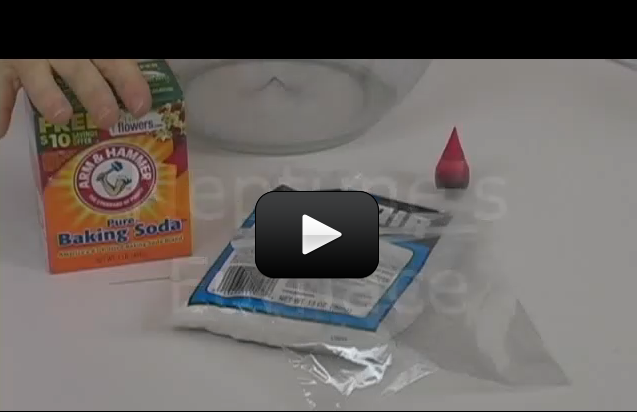We’re going to do a chemistry experiment to simulate the heat generated by the internal core of Neptune by using a substance used for melting snow mixed with baking soda.
Calcium chloride splits into calcium ions and chloride ions when it is mixed with water, and energy is released in the form of heat. The energy released comes from the bond energy of the calcium chloride atoms, and is actually electromagnetic energy. When the calcium ions and chloride ions are floating around in the warm solution, they are free to interact with the rest of the ingredients added, like the sodium bicarbonate, to form carbon dioxide gas and sodium chloride (table salt).
Materials
- Calcium chloride
- Sodium bicarbonate (baking soda)
- Phenol red or red food dye
- Re-sealable plastic baggie
- Gallon milk jug container
- Straight pin
- Warm water
- Cold water


No, you most likely won’t find calcium chloride in a grocery store. You can find it at camping supply stores (or online) under the name “Dri Z Air”. Some ice melt products are made with calcium chloride, but you need to check the contents to ensure it is the only ingredient.
can I find calcium chloride at my local grocery store
The “What’s Going On?” section will help you understand why we use calcium choloride.
what do you use calcium chloridefor
It’s available at Home Science Tools or Amazon.
Hi. Where can I buy calcium chloride?
When I try to mix the salt with the red dye water and b-soda,it still ain’t workin’.
When I try to mix the salt with the red dye water,it doesn’t get hotter. What am I doing wrong?